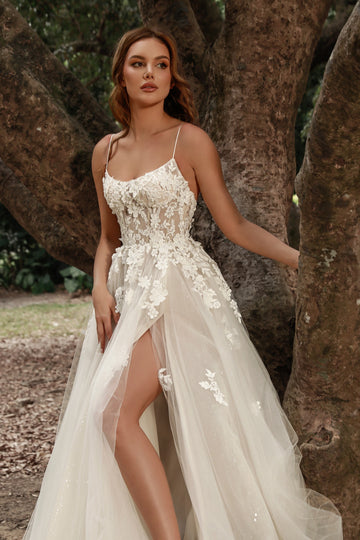Cultural Influences in Emerging Bridal Design: A Global Perspective
Cultural Influences in Emerging Bridal Design: A Global Perspective
Bridal design has evolved dramatically over the years, reflecting the diverse cultural influences that shape personal celebrations of love. As more brides seek to incorporate unique elements into their wedding attire, the fusion of different cultural aesthetics is becoming increasingly prominent. This article explores the various cultural influences in emerging bridal design and how they contribute to the modern bride's aesthetic.
Understanding Bridal Design
Bridal design is not just about fabric and style; it encapsulates a myriad of cultural elements that convey personal stories and traditions. The influence of global cultures creates a rich tapestry of choices for brides today. This evolution can be attributed to several factors, including globalization, social media, and the desire for individuality.
Globalization and Cultural Exchange
Globalization has interconnected societies worldwide, enabling bridal designers to draw inspiration from various cultures. International bridal shows showcase diverse styles, allowing designers to adopt and adapt elements from different traditions. For example, a traditional Japanese kimono could inspire a modern gown with intricate embroidery and rich colors. 
| Cultural Influence | Key Features |
| Western Styles | White dresses, ball gowns, and lace details |
| Indian Culture | Rich fabrics, vibrant colors, and intricate embellishments |
| Chinese Traditions | Red dresses, phoenix and dragon motifs, and silk |
| African Heritage | Bold patterns, unique silhouettes, and cultural symbols |
Social Media's Role in Bridal Design
Social media platforms, particularly Instagram and Pinterest, have revolutionized how brides perceive and seek inspiration for their wedding attire. Stylish influencers share their experiences, showcasing a myriad of bridal styles that reflect cultural backgrounds. Brides-to-be often explore hashtags such as #BohemianBride or #CulturalBridalWear, which lead them to discover diverse designs that resonate with their heritage or aesthetic preferences.
The Modern Bride and Individuality
Today's brides are looking for more than just a dress; they desire an outfit that reflects their individuality. The rise of bespoke bridal design services allows brides to infuse personal elements with cultural significance. For instance, a bride may choose a gown inspired by her grandmother's Irish lace, incorporating modern silhouettes and fabrics, thereby keeping her heritage alive while embracing contemporary style.
Specific Cultural Influences
1. Indian Bridal Wear
Indian weddings are renowned for their vibrancy and elaborate attire. The traditional bridal wear often includes a lehenga or sari adorned with intricate embroidery and embellishments. With colors such as red, gold, and green symbolizing love, prosperity, and fertility, modern Indian brides are increasingly opting for fusion styles that combine traditional elements with contemporary designs.
2. Chinese Traditional Elements
In Chinese culture, the color red represents happiness and good fortune, making it a popular choice for bridal gowns. Traditional dresses like the Qipao are becoming fusion pieces, incorporating Western styles while retaining cultural significance through design and color. As couples blend traditions, it's not uncommon to find brides wearing a sleek white gown for the ceremony and a red dress for the reception, signifying both cultures.
3. African Heritage
African bridal design showcases vibrant colors and bold patterns. Materials like kente cloth are used to create stunning gowns that highlight the bride's cultural heritage. The infusion of traditional dress with modern design principles creates a unique bridal look that celebrates identities. Elements such as head wraps and statement jewelry often accompany these dresses, adding to the overall aesthetic.
Adapting Cultural Influences in Contemporary Design
Designers today are faced with the challenge of respecting cultural significance while creating trendy, modern bridal wear. It is crucial for designers to collaborate with cultural representatives to ensure authenticity and integrity in their designs. Challenges arise when cultural appropriation occurs, leading to the importance of understanding the cultural context behind certain styles.
Understanding Cultural Significance
A key element in embracing cultural influences in bridal design is understanding the significance behind various traditions. For instance, a bride choosing to wear a sari must appreciate its history and cultural relevance. Moreover, attending workshops or engaging with cultural experts can enrich a designer's portfolio and promote respectful representations of each culture.
Advice for Brides Seeking Cultural Touches
For brides looking to incorporate cultural elements into their designs, consider the following tips:
- Research: Understand the cultural significance behind various designs and elements.
- Consult with Experts: Work with designers or cultural consultants who respect and understand the traditions.
- Be Creative: Look for ways to blend different cultural designs to create something unique that also has personal meaning.
- Choose Quality Materials: The richness of fabrics can elevate any design, making it a celebration of both culture and style.
Conclusion
The exploration of cultural influences in emerging bridal design reveals a beautiful blend of traditions and modernity. As the global landscape continues to change, these influences allow brides to express their individuality while honoring their roots. The key takeaway for aspiring brides is to embrace these cultural elements authentically, ensuring that their bridal attire truly reflects their story and heritage. By understanding and respecting the significance of cultural influences in bridal design, brides can achieve a timeless look that resonates on a personal level while contributing to the evolving narrative of wedding fashion.
